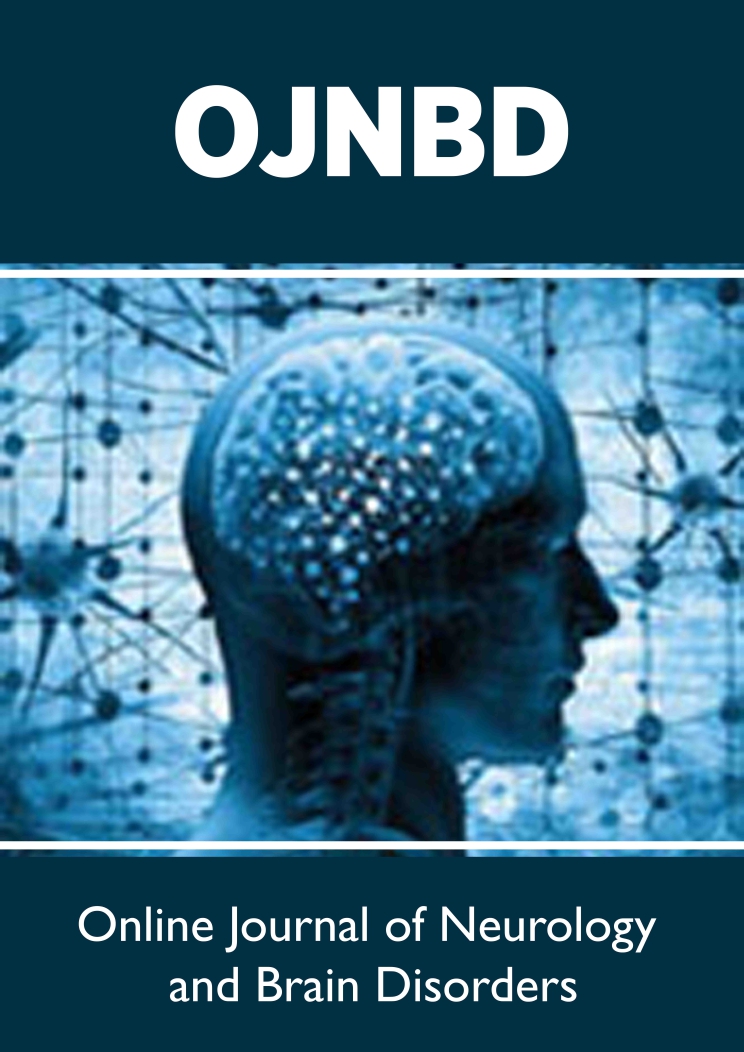
Lupine Publishers Group
Lupine Publishers
Menu
ISSN: 2637-6628
Mini Review(ISSN: 2637-6628) 
Physiology of Sleep and Clinical Characteristics Volume 1 - Issue 3
Miranda Nava Gabriel*
- Neurologist and Clinical Neurophysiologist, Chief of Neurology of the Hospital Center of the Presidential General Staff, Mexico
Received: May 23, 2018; Published: May 29, 2018
Corresponding author: Gabriel Miranda Nava, Neurologist and Clinical Neurophysiologist, Attached to the Hospital Center of the Presidential General Staff, Master in Public Health, Doctor in Administration and Public policies, Mexico
DOI: 10.32474/OJNBD.2018.01.000114
Mini Review
General Considerations
Sleep is defined as a natural decrease in the perception [1] of the external environment that occurs periodically and reversibly, but retaining a certain degree of reactivity towards the environment and autonomous functions [2]. Sleep is considered an active process of biological, cyclical and, it is essential for survival. Most adults require an amount of sleep between 7-8 hours per day; however, there are individual variations regarding the schedule, duration, and internal structure of the dream [3].
Sleep is associated with the state of physical and mental health. It is documented that during this process of neurobiological nature, functions inherent to the organism are verified [3]. Through sleep, the organism recovers from everyday fatigue [4]. Likewise; sleep plays a relevant role in the consolidation of learning and memory. On the contrary, sleep deprivation impairs psychomotor and cognitive functions including the time of reaction to a stimulus, surveillance capacity, judgment, attention and, information processing. In addition, sleep deprivation is associated with decreased concentration and high frequency of affective disorders [5-7]. It is estimated that sleep disorders and alterations in the circadian rhythm affect 15-20% of adult individuals [7,8].
Numerous studies show that sleep disorders favor the development of various diseases, and can adversely affect their evolution, including cardiovascular disease, glucose intolerance, hypertension (HAS) and obesity. On the other hand, in several investigations it is shown that sleep disorders can adversely affect the state of mental health causing excessive drowsiness, fatigue, cognitive alterations and affective disorders [5,6,7,9].
The characteristics of normal sleep are described by three electrophysiological parameters that include: [10].
a. Brain electrical activity (electroencephalogram, EEG).
b. Eye movements (electro-oculogram, EOG).
c. Muscle activity (electromyogram, EMG).
From a physiological point of view, the continuous recording of these parameters allows distinguishing the waking state of the dream and, within it; different phases are identified [10]. The EEG record of a healthy adult who is in the waking state and with his eyes closed demonstrates basal electrical activity consisting of a series of waves of relatively fast frequencies and low to moderate amplitude. This pattern is designated as beta waves (13-25cycles/s) and alpha waves (8-12cycles/s); In addition, the EMG shows high tonic activity, and the EOG records a series of rapid eye movements and flickering.
When numbness occurs, eye movements slow down, EMG activity decreases and the alpha wave record is replaced by a pattern that is characterized by a series of slow frequency waves (3-7cycles/s) and low amplitude. In the center of the skull there are outbreaks of waves that show greater voltage. This period is denominated as N1 Stadium of the dream [10,11]. Next, the EEG registers the spindles that are characteristic of the dream (outbreaks of 12-15 cycles/s), and the K complexes (slow wave outbreaks of 1cycle/s) that constitute markers of the N2 Stage. From this moment, an individual stops responding to simple orders and cannot remember events that have occurred. Additionally, as the depth of sleep increases, the EEG registers a type of electrical activity called slow delta (1-3cycles/s) with high amplitude (Stage N3) [11].
After Stage N3, the transition to the so-called rapid eye movement dream or REM (or REM) dream is evident. REM sleep is characterized by having this type of movements in the eyes that are similar to those registered during the waking state (with closed eyes) and with minimal muscle activity; in addition, the EEG records a pattern of intermediate activity between the waking state and the N1 stage, consisting of wave sprouts with triangular morphology of 3-5 cycles/s [12]. The electrophysiological recordings that are evidenced during REM sleep are characteristic and allow the classification of sleep in two stages: REM sleep and non-REM sleep (includes stages N1-N3) [12,13].
During sleep various variations are recorded in some physiological processes including heart rate, body temperature, respiratory rate and hormonal secretion [14]. In general terms, basal cardiac activity is greater in the waking state, and decreases during sleep; however, the heart rate increases at specific times. Systemic blood pressure and heart rate show lower values during Stage N3 of non-REM sleep in relation to baseline; however, during REM sleep, lower values are recorded with respect to the waking state [14].
In the first stages of sleep (Stages N1 and N2), breathing is irregular, with episodes in which the respiratory amplitude increases, but there are also periods in which it decreases. In Stage N3, breathing is regular in both frequency and amplitude; it also decreases ventilation per minute [14]. In the secretion of hypothalamic-pituitary hormones rhythmcity associated with sleep and wakefulness is demonstrated. The plasma levels of growth hormone and prolactin increase during sleep. Cortisol is secreted with periodicity independent of environmental influences. The highest concentration of this hormone is demonstrated in the early hours of the morning, prior to awakening. The concentration of cortisol decreases during the day to reach its lowest levels at the beginning of sleep [14]. Body temperature decreases at the onset of sleep, and its lowest level is recorded during the second half of the night [14-16]. It is postulated that the generation of the process of sleep and awakening occurs along a neuronal axis comprised between the brainstem and the anterior portion of the brain [17].
Cardiac Rhythms
Circadian rhythms are regulated by a “biological clock” located at the level of the suprachiasmatic nucleus of the hypothalamus in the Central Nervous System (CNS) [17]. It is postulated that the light-dark level influences the endogenous biological clock, in virtue of direct neural connections between the suprachiasmatic nucleus and the retina. The biological clock demonstrates an approximate rhythm city of 24 hours (h) with respect to
Periodic repetition of sleep and the waking state every 24 hours depends not only on the exterior (day and night), but is determined by genetic mechanisms, since a similar rhythm persists (approximately 25 hours) after the external influences associated with some schedule [17]. In addition, various biological functions show approximate rhythmcity of 24h, including urinary excretion for potassium, gastric secretion and acid renal secretion. In general terms, these rhythms are called “circadian” (circa = around), by virtue of their duration of approximately one day [18].
Recent evidence shows that at the level of the CNS there are neural feedback loops in which a genetic transcription process that forms specific proteins to integrate the molecular basis of the endogenous biological clock is verified. This molecular basis is demonstrated in some peripheral tissues that indicates the physiological relevance of circadian rhythmcity throughout the organism [17,18].
Classification of Sleep Disorders
Being according to the international classification of sleep disorders (2005):
a. Insomnia.
b. Sleep disorders secondary to respiratory disorders.
c. Hypersomnia of central origin not related to circadian rhythm disorders, sleep disorders due to respiratory disorders, or other cause that interrupts nighttime sleep.
d. Circadian rhythm disorders.
e. Parasomnias.
f. SAW. Sleep disorders due to movement disorders.
g. Isolated symptoms, seemingly normal variations and unresolved issues.
h. Other sleep disorders
Excessive daytime sleepiness It refers that sleepiness consists of a propensity to sleep, and represents the transition from the waking state to the beginning of sleep. Several studies indicate that 4-9% of adult individuals show excessive daytime sleepiness [19]. The main cause of this disorder is Obstructive Sleep Apnea Syndrome (OSAS) [20].
In OSAS, there is a respiratory dysfunction that is associated with intermittent hypoxia during sleep, resulting in sleep fragmentation, sleep deprivation and insomnia [20]. This syndrome occurs frequently in men who are overweight - obese, and in older adults. Estimates indicate that it affects 2 to 5 million adults in the United States of America. OSAS is due to episodic occlusion in the airway that results in a decrease or cessation of breathing lasting between 10-150s, and repeated thirty to several hundred times during the night. OSAS causes excessive daytime sleepiness with decreased alertness, hyperactivity of the Sympathetic Nervous System, oxidative stress, systemic arterial hypertension and cardiovascular complications [20].
Excessive sleepiness usually occurs in situations that require poor physical activity, as well as relative alertness. In addition, excessive sleepiness can be evidenced as an automatic behavior in which routine activities are carried out but without being fully aware of them such as writing or walking, and which register duration from seconds to minutes [21]. The results of electrophysiological records in people with excessive daytime sleepiness evidence shortening in latencies that corresponds to the onset of sleep. These records are consistent with the existence of micro-dreams that interfere with the state of alert, and affect the ability to respond appropriately to specific requirements of cognitive functioning. The above, causes variability in cognitive functions that results in an unstable alert state, and favors errors by omission, or errors by commission. The errors by omission constitute behavioral lapses evidenced by the inability to respond to a stimulus during the appropriate time. On the other hand, commission errors are behavioral type responses without any stimulus, or represent incorrect responses to a specific stimulus [21]. Excessive daytime sleepiness is associated with problems in social relationships and decreased individual performance that leads to job loss, school failure and high risk of work and traffic accidents, among other consequences [22].
Insomnia
In studies carried out in various countries, insomnia is considered to be the most frequent sleep disorder. Estimates indicate that its prevalence varies according to age (higher in adults) and gender (higher in females). Insomnia is rare and is estimated to affect 6% of the adult population [21,23].
Atypical behaviors during sleep
Atypical behaviors during sleep or parasomnias are rare disorders in adults. However, it is pointed out that 15% of children occasionally have an episode of sleepwalking, between 1 - 6% present night terrors, and approximately 20% experience nightmares [24].
Disorders in the sleep cycle – wakefulness
Sleep deprivation caused by an imbalance in circadian rhythmicity results in excessive drowsiness, cognitive dysfunction and insomnia [7].
Some studies report that this disorder may be transient or persistent
The transitory imbalance of the sleep-wake cycle is verified during air travel through areas that have different hours, or by frequent modifications in the work schedule.17 On the other hand, the persistent circadian maladjustment includes two syndromic pictures [25].
Syndrome with delayed sleep phase
This syndrome consists of being able to sleep until 2:00 or 3:00 a.m. It should be noted that sleep is normal in both quantity and quality, and should not be confused with insomnia.
Syndrome with advanced sleep phase
In this syndrome, a very early awakening is verified.
The role of the imbalance in the circadian rhythm as a trigger for the development of insomnia has yet to be elucidated. Authors postulate that insomnia can start as a mismatch in circadian rhythmicity and later evolve into a chronic type disorder [7].
References
- Lim SM, Chia SE (2015) The prevalence of fatigue and associated health and safety risk factors among taxi drivers in Singapore. Singapore Med J 56(2): 92-97.
- Hale L (2005) Who has time to sleep? J Pub Health 27(2): 205-211.
- Lack LC, Gradisar M, Van Someren EJW, Wright HR, Lushington K (2008) The relationship between insomnia and body temperatures. Sleep Med Rev 12(4): 307-317.
- Muzet A (2007) Environmental noise, sleep and health. Sleep Med Rev 11(2): 135-142.
- Rasch B, Born J (2013) About sleep’s role in memory. Physiol Rev 93(2): 68 -766.
- Lewis PA, Durrant SJ (2011) Overlapping memory replay during sleep builds cognitive schemata. Trends Cogn Sci 15(8): 343-351.
- Potter G, Arendt DJ, Cade JE, Grant PJ, Hardie LJ (2016) Circadian rhythm and sleep disruption: Causes, metabolic consequences, and countermeasures. Endocr Rev 37(6): 584-608.
- Leger D, Poursain B, Neubauer D, Uchiyama M (2008) An international survey of sleeping problems in the general population. Curr Med Res Opin 24(1): 307-317.
- Heo YS, Chang SJ, Park SG, Leem JH, Jeon SH, et al. (2013) Association between workplace risk factor exposure and sleep disturbance: Analysis of the 2nd Korean working conditions survey. Ann Occup Environ Med 25: 41.
- Freedman RR (1986) EEG power spectra in sleep-onset insomnia. Electroencephal Clin Neurophysiol 63(5): 408-413.
- Van Cauter E, Leproult R, Plat L (2000) Age-related changes in slow wave sleep and REM sleep and relationship with growth hormone and cortisol levels in healthy men. JAMA 284(7): 861-868.
- Ogilvie R, Wilkinson R (1984) The detection of sleep onset: Behavioral and physiological convergence. Psychophysiology 21(5): 510-520.
- Lesch D, Spire P (1990) Handbook of sleep disorders. Clinical Electroencephalography New York, pp. 13-32.
- Fido A, Ghali A (2008) Detrimental effects of variable work shifts on quality of sleep, general health and work performance. Med Princ Pract 17(6): 453-457.
- Gonnissen HK, Rutters F, Mazuy C, Martens EA, Adam TC, et al. (2012) Effect of a phase advance and phase delay of the 24h cycle on energy metabolism, appetite, and related hormones. Am J Clin Nutr 96(4): 689- 697.
- Wright KP, Drake AL, Frey DJ (2015) Influence of sleep deprivation and circadian misalignment on cortisol, inflammatory markers, and cytokine balance. Brain Behav Immun 47: 24-34.
- Borbély AA, Daan S, Wirz JA, Deboer T (2016) The two process model of sleep regulation: A reappraisal. J Sleep Res 25(2): 131-143.
- Sookoian S, Gemma C, Gianotti TF, Burgueño A, Castaño G, et al. (2008) Genetic variants of clock transcription factor are associated with individual susceptibility to obesity. Am J Clin Nutr 87(6): 1606-1615.
- Dillon HR, Lichstein KL, Dautovich ND, Taylor DJ, Riedel BW, et al. (2015) Variability in self-reported normal sleep across the adult age span. Journals of Gerontology, Series B: Psychological Sciences and Social Sciences 70(1): 46-56.
- Peppard PE, Young T, Barnet JH, Palta M, Hagen EW, et al. (2013) Increased prevalence of sleep disordered breathing in adults. Am J Epidemiol 177(9):1006-1014.
- Durmer JS, Dinges DF (2005) Neurocognitive consequences of sleep deprivation. Sem Neurology 25(1): 117-129.
- Uehli K, Mehta AJ, Miedinger D, Hug K, Schindler C, et al. (2014) Sleep problems and work injuries: A systematic review and meta-analysis. Sleep Med Rev 18(1): 61-73.
- Kucharczyk ER, Morgan K, Hall AP (2012) The occupational impact of sleep quality and insomnia symptoms. Sleep Med Rev 16(6): 547-559.
- Stevenson MR, Elkington J, Sharwood L, Meuleners L, Ivers R, et al. (2014) The role of sleepiness, sleep disorders, and the work environment on heavy-vehicle crashes in two Australian States. Am J Epidemiol 179(5): 594-601.
- Wright KP, Bogan RK, Wyatt JK (2013) Shift work and the assessment and management of shift work disorder. Sleep Med Rev 17(1): 41-54.

Top Editors
-

Mark E Smith
Bio chemistry
University of Texas Medical Branch, USA -

Lawrence A Presley
Department of Criminal Justice
Liberty University, USA -

Thomas W Miller
Department of Psychiatry
University of Kentucky, USA -

Gjumrakch Aliev
Department of Medicine
Gally International Biomedical Research & Consulting LLC, USA -

Christopher Bryant
Department of Urbanisation and Agricultural
Montreal university, USA -

Robert William Frare
Oral & Maxillofacial Pathology
New York University, USA -

Rudolph Modesto Navari
Gastroenterology and Hepatology
University of Alabama, UK -

Andrew Hague
Department of Medicine
Universities of Bradford, UK -

George Gregory Buttigieg
Maltese College of Obstetrics and Gynaecology, Europe -

Chen-Hsiung Yeh
Oncology
Circulogene Theranostics, England -
.png)
Emilio Bucio-Carrillo
Radiation Chemistry
National University of Mexico, USA -
.jpg)
Casey J Grenier
Analytical Chemistry
Wentworth Institute of Technology, USA -
Hany Atalah
Minimally Invasive Surgery
Mercer University school of Medicine, USA -

Abu-Hussein Muhamad
Pediatric Dentistry
University of Athens , Greece

The annual scholar awards from Lupine Publishers honor a selected number Read More...














